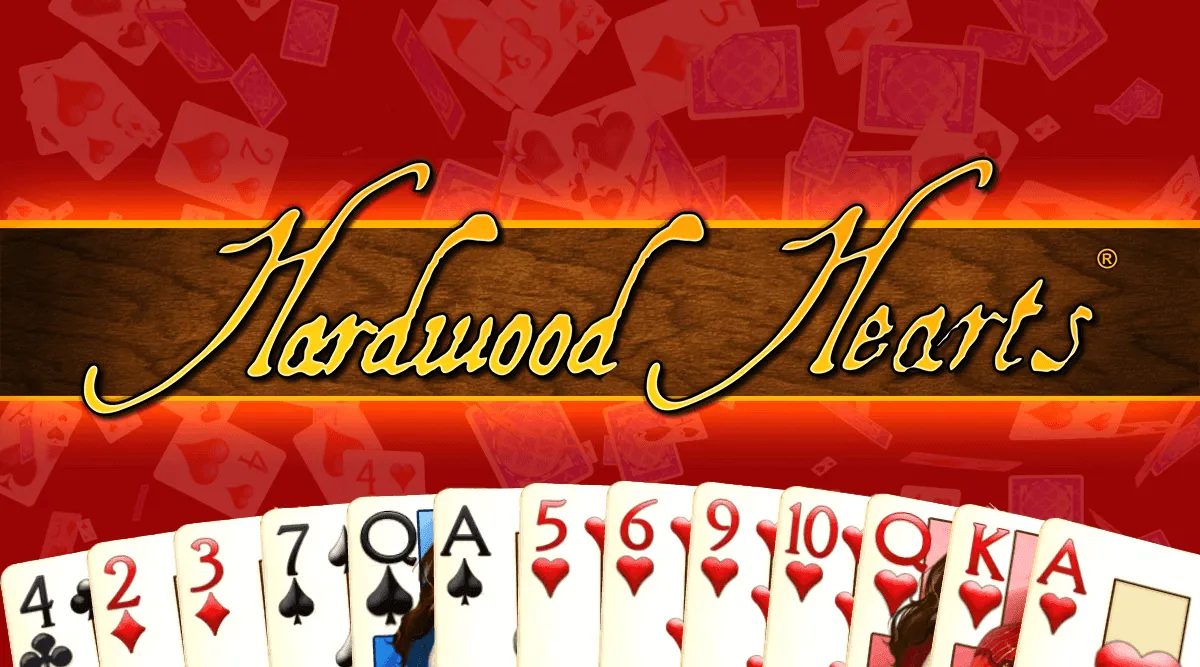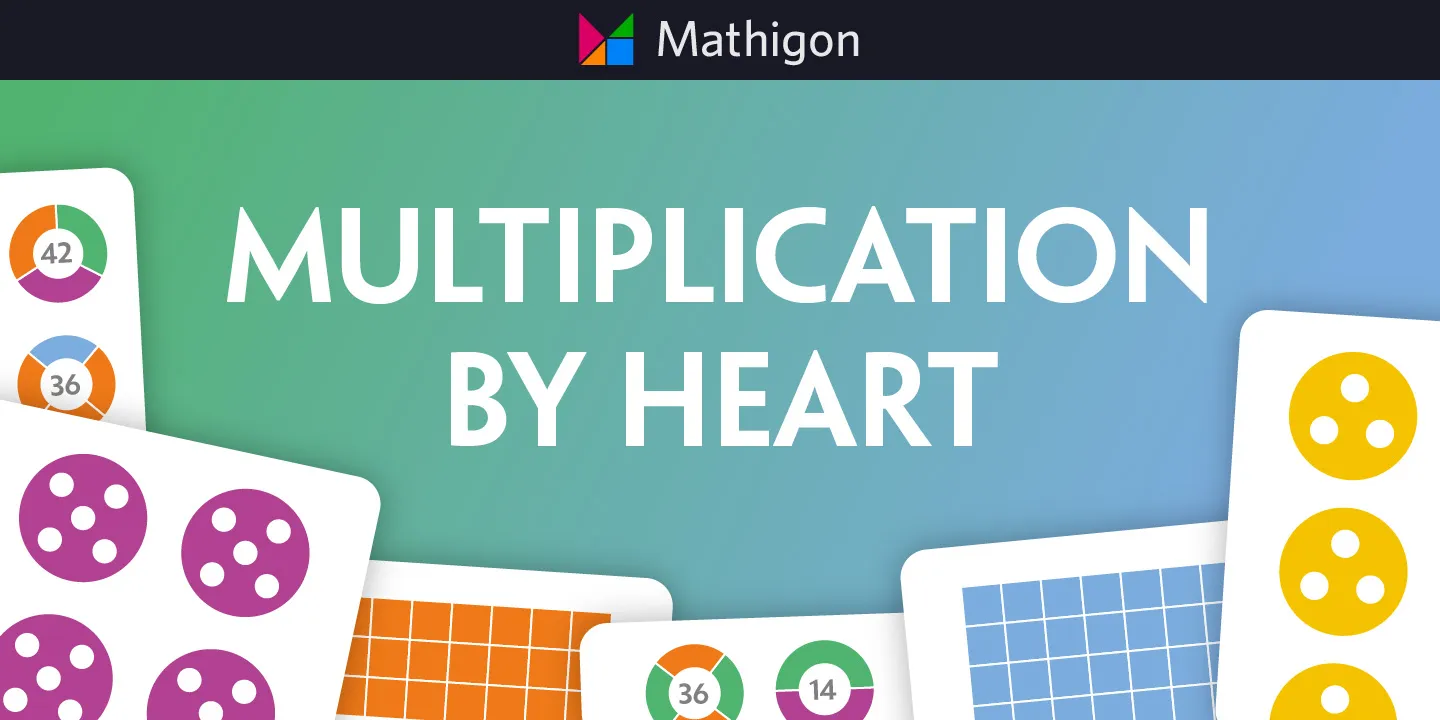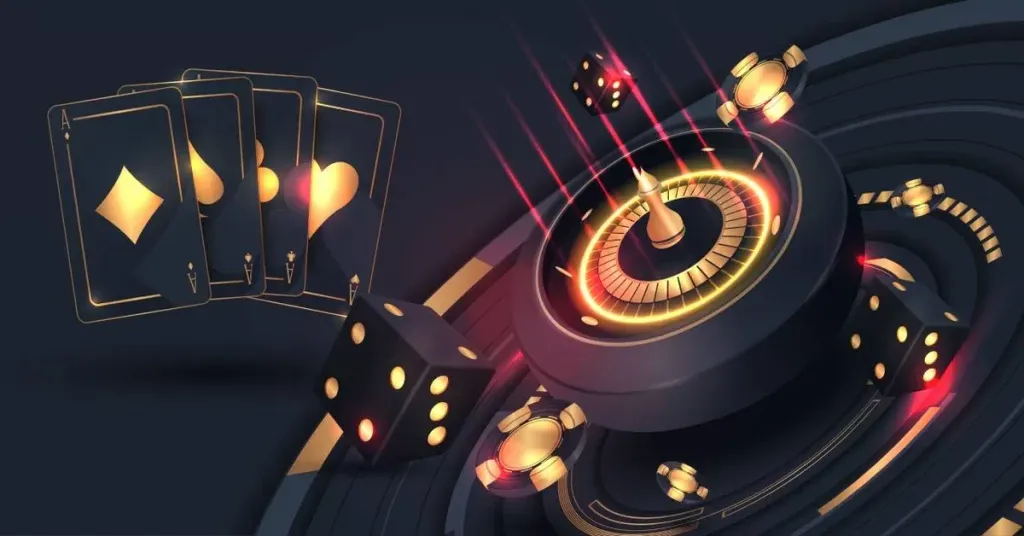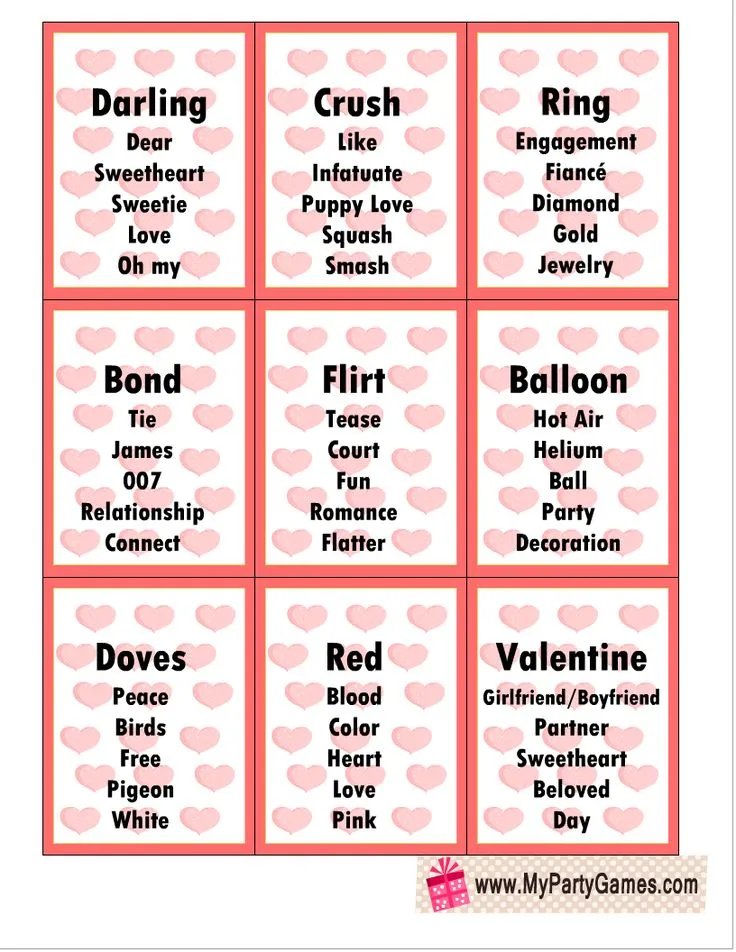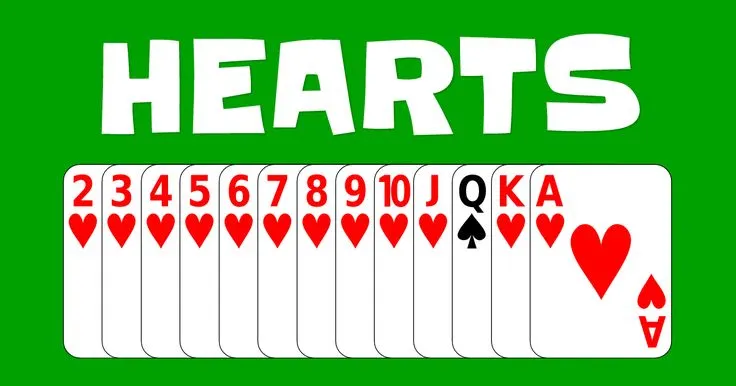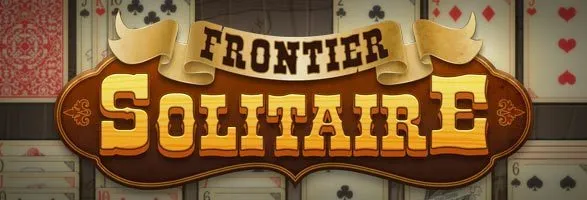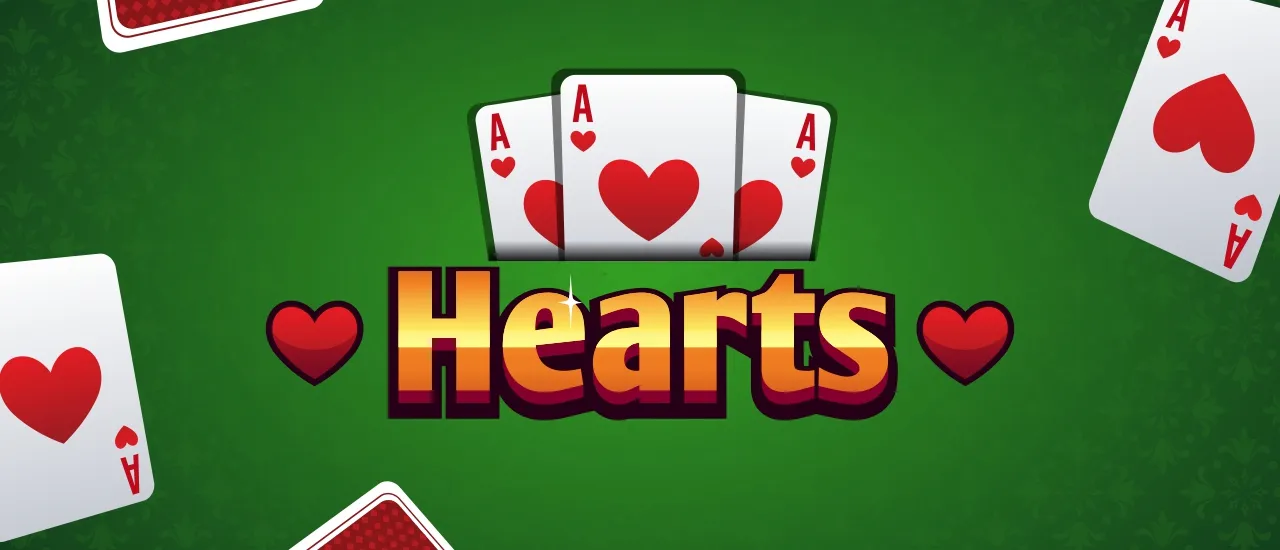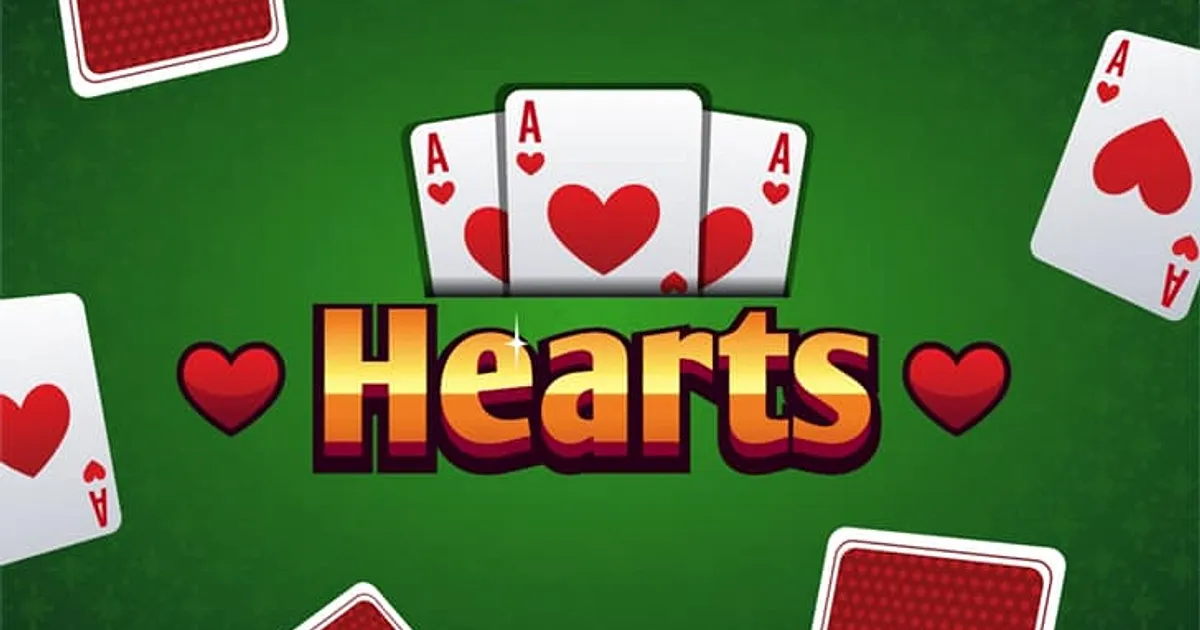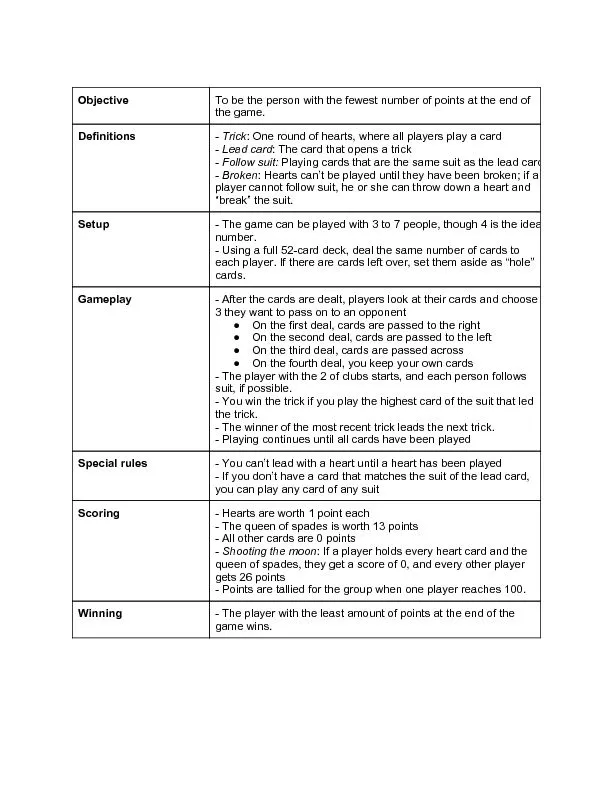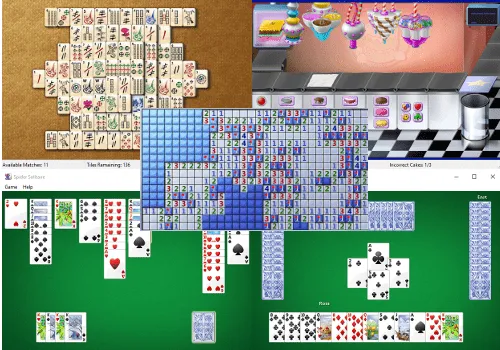Hearts Variations - card game rules
Variations of the card game Hearts invented and submitted by readers of pagat.com. This page is a collection of invented variations of the traditional card game Hearts, submitted by readers of pagat.com.
- Dragon Hearts
- Dummy Hearts (3 players)
- Four Queens
- Huse Hearts for Two
- Joker Hearts
- Reverse Hearts
- Super Hearts
- Ten of Hearts 10 Points
- Toss Hearts (eight-suited hearts)
- Trump Hearts
- Two Blind Bitches
- Two-Player Hearts
- Valentine Hearts (archive copy)
- Wilson System
Joker Hearts
Jonathan Crawford writes: Was reading your hearts page, and thought I would tell you about a variation that my coworkers and I came up with. We played single and double deck, with as much as nine people, but the item I want to tell you about is that we added up to four jokers, which were basically free cards. They basically count as nothing. They cannot take a trick, and are great to have when you don’t want to play that Q of spades. You can play them at any time, even if you can follow suit. You can also lead them and force the next player to lead. It is an interesting rule that makes it even more difficult to shoot the moon.
Two-Player Hearts
Contributed by Jeffrey Hope who writes: “I still consider Two-Player Hearts to be a work in progress, but I think I’ve settled on most of the rules. One of my goals of Two-Player Hearts is to adapt the game to most of the major Hearts variations played, so anything new is either a variation or an adaptation of a major variation not yet covered here. “Also, this game has very little if anything in common with Darrin Berkley’s newly contributed Two-Player Spades. The closest two-player Hearts variant to Two-Player Spades that I can figure out would be Two Blind Bitches.” These rules assume you already know how to play Hearts. If you don’t, you can always refer to the rules of standard Hearts. Before you play, remove all the 3’s, 5’s, 7’s, 9’s, Jacks, Kings and Jokers from the deck, leaving 28 cards. The first card is dealt face down to a widow, then 13 cards are dealt to each player, then the final card is added face down to the same widow. If you’re used to the “pass three cards” rule, you only pass one card. If you go by the “left, right, across, keep” rule (or some variation of that), you alternate passing and not passing. You still cannot look at the card passed to you until you’ve passed a card. Convention: If your opponent has passed to you, but you haven’t passed yet, you may place your passed card face-up, since both of you know what it is anyway. You still have to pass before you look at the card passed to you, and of course you can’t pass the same card back. Those playing by the “Two of clubs plays first” rule can still follow it. Otherwise, the non-dealer plays first. If the 2 rule is used and neither player has it, then the 4 starts. This obviously means that the 2 is in the widow. If the 2 and 4 are both in the widow the 6 starts. The Jack of Diamonds is removed from the deck, so if you like play “Omnibus Hearts”, in which the J reduces your score by 10 points, the 10 is used instead and the card now takes away only five points, not 10. The Queen of Spades adds 7 penalty points instead of 13. If you normally play that all hearts are worth one point, this scoring is still in effect. If you play Spot Hearts (where the hearts are worth face value), and aces are high for this rule, the value of the hearts is halved. If you play Spot Hearts but aces are low for this rule, scoring gets a bit more complicated: the A and 2 keep their normal values, but the 4 is worth three, the 6 is worth 4, the 8 is worth 5, the 10 is worth 6, and the Q is worth 7! (Two queens to avoid! Oh no!) However, the ace-high version is preferable as the scores are easier to remember. The spade queen may be made 13 points rather than 7 if desired. This is because Spot Hearts players often play with the Q as 25 points. In two-player hearts the scores are halved and rounded, so 25 converts to 13. Shooting the moon causes the other player to score 14 points (or 35 in Spot Hearts or 41 with the 13-point Q in Spot Hearts) while you score zero for the hand. It doesn’t count as shooting the moon if there are point cards in the widow. This is not too bad if the Q is in there, but more likely it will be a heart, causing a disastrous penalty. There is no bonus for shooting the sun in this game. If playing one-point-per-heart, the first person to 50 points loses. For two-player Spot Hearts, 250 loses the game. If both players go above 50 or 250 in the same deal, but one has a lower score than the other, that player wins. Example: Both players, in regular 2PH, somehow have 49 points (a break-even average). One person gets eight points that round while the opponent gets five (there was a heart in the widow), resulting in a 57-54 score. The winner would be the one with 54 points. However, if the two players are tied, a tiebreaker hand is played. There is no passing in the tiebreaker. It’s up to the players to decide in advance whether shooting the moon is allowed in the tiebreaker deal.
Variations
- If you are playing with very young children (or very hard-pressed for time and can only squeeze maybe two or three rounds at max), don’t keep a running total.
- There are five passing variations available:
- From the fact that I can’t remember whether the original game mentioned in the history below passed one or two cards: If you don’t use a passing pattern, always pass two cards. If a passing pattern is used, then pass two, hold, pass two, hold, etc.
- If you don’t like hold hands: Pass one, pass two, pass one, pass two, etc. (it doesn’t matter which you start with but you need to agree in advance which one to use first)
- If it bothers you that the number of cards passed can be figured out solely by who’s dealing: Pass one, pass two, hold, pass one, pass two, hold, etc. (you can switch the pass ones and the pass twos if you like but every third hand must be a hold)
- Both 2b and 2c apply to you: Pass one, pass two, pass three, pass one, pass two, pass three, etc. (or in descending order if you want: Pass three, pass two, pass one, pass three, pass two, pass one, etc.)
- You can follow normal Hearts procedure and pass three cards each time (or alternate passing three cards and not passing). In fact, the only reason I didn’t put in this variant until now is because I caught myself passing this way on September 2, 2006. It was the very first hand, so we agreed to pass three and hold for that evening (we play with hold hands).
- The original rules gave Omnibus Hearts players the choice between treating the 10 or the Q as the replacement for the removed J as long as you stay with the card you decided on. I’ve settled on the former from reading an Omnibus Hearts variation already in use on the regular Hearts page, but you can still play with the Q if you want (it’s just no longer an official rule).
- Some players deduct what in Two Player Hearts is the equivalent of 14, 35, or 41 points when shooting the moon instead of add to the opponent’s score. If you play Omnibus Hearts and require the 10 or Q to shoot the moon, add five to these values.
History - Jeffrey Hope writes:
“I created the game in El Paso, Texas, USA. I still live there. The first time that I have personally played outside El Paso was in Cincinnati, Ohio, USA on either July 3 or July 4 (I can’t remember the exact date) of 2005 with my cousin. I won the game. (I don’t want any vicious competition, but I’ll welcome e-mails for people outside of El Paso who have played it saying that they’ve played earlier. Again, no vicious competition. Put “Two-Player Hearts” as the subject because if it ends up in my spam folder, I’ll hopefully know it’s legitimate.) “I created the game sometime in the first half of 2004 (I think) because my mom (48 at the time assuming the date is correct) and I (then 14) both play hearts on the computer (her more than me), and at some point I wanted to play her, but there were two problems - the hearts game (the one which comes with Windows nowadays) is a one-player game, and we are the only two in the household who play Hearts. Hence came the first rules of the Two-Player Hearts game. “The original rules were based on the computer game. If you play the Hearts game which comes with Windows computers, you have some idea of the rules we play by, but if you have a Macintosh (or have it but don’t play it), we play by the 2C rule and we pass cards. I don’t remember whether we passed one or two cards the first time (which is why I added the passing variation on this page). “Originally, 14 cards were dealt with no widow (the cards that were removed are the same ones removed today). After a period of time when we never played, I decided to somewhat “re-teach” her my game, with the 14-card rule still in effect. My mom quickly found that it’s very easy to get your opponent to do what you want him to do (she’s a better Hearts player than I am), so she created the widow rule (the only rule original to Two-Player Hearts I didn’t create).”
Reverse Hearts
Contributed by Wendy Harvie This is a partnership game. You and your partner (the player across from you) score positive points for taking hearts (1 each) and the queen of spades (13), while the jack of diamonds becomes a penalty card (-10). The game is won by the first team to 100 points. So the scoring is the reverse of normal hearts. To make it more interesting, you can agree that a team that takes all the hearts and the queen of spades loses 26 points - shooting the moon in reverse. At one time this variation was available to play on line at MSN Game Zone, but has since been removed.
Wilson System
This is a system of settling the final scores in the standard game of Hearts, which has a considerable effect on tactics towards the end of a game, and is particularly interesting when the game played for money. It has the useful feature that the final positive and negative scores always balance, with a sum of zero. Dave Jordan writes that he encountered this variation at MIT in 1966. It was popular for late night nickle a point games. Points are counted as usual - hearts one point, queen of spades 13 points. If someone shoots the moon it’s their option whether to subtract 26 from their own score or add 26 to everyone else’s. The game ends when any player(s) have a score of at least 100 points. Each player’s final result is determined by the difference between their own points and the points of the next higher player (if any) and the next lower player (if any). Each player gets paid by the player above and pays the player below. For example:
| Player | Raw score | Final gain or loss |
|---|---|---|
| A | 103 | -13 = 0 - (103-90) |
| B | 90 | -67 = (103-90) - (90-10) |
| C | 10 | +75 = (90-10) - (10-5) |
| D | 5 | +5 = (10-5) - 0 |
| If scores are tied, the players split the positive and negative. Example: if the scores are A:103, B:50, C:50, D:10 then B and C spilt the net result of +13 between them: each wins 6.5 while A pays 53 and D collects 40. | ||
| This variation introduces considerable late game strategy as players jostle for position. Minor differences in scores often lead to major differences in outcome. One less obvious result occurs when two or three players are about to go out - at, say, 90 points - while the remaining one or two are still very low - say around 20 points. At that point the high score players can maximize their results by ending up with the highest score so they tend to fight over the remaining points. Also, if there are two or three players with low scores they, too, may be in a position to maximize their results by taking more points than their opponents. |
10 of hearts 10 points
Leanne Schwenneker suggests scoring the 10 of hearts as 10 penalty points, for a total of 35 points per deal. All other rules for hearts are unchanged. This calls for a slightly different strategy to avoid getting caught with either the 10 or the Q. If you get both, naturally you hope/wish you had all the other high hearts to shoot the moon.
Huse Hearts for Two
This interesting two-player variant with a dummy was contributed by Gordon Huse . This game allows for all 52 cards to be played while minimizing the effect of chance, once the cards are dealt. It provides for each player knowing, to a large degree (the whereabouts of 48 of 52 cards are known), what the other player’s cards are - without this being an advantage or disadvantage. It is both. It also provides an opportunity for either player to Shoot the Moon (i.e.. make a successful “run”).
Setup
- This game is played with a standard 52-card pack. The ranking order of cards for all suits is 2 (lowest)-3-4-5-6-7-8-9-10-J-Q-K-A (highest).
- The penalty cards are the Queen of Spades (13 points) and all the Hearts (1 point each).
- Deal 16 cards to each of the two players and a third hand (hereafter referred to as the “dummy hand”) of 16 cards, face up.
- Deal 4 cards, face down, into the blind.
- Arrange the cards in the dummy hand in order by suit and rank, to facilitate play.
- Pass three cards, face down, to your opponent. He does likewise and each player includes these cards in those he will play.
Play
- The holder of the two of clubs must lead it. If it is not in either of the two live players’ hands, go to the three, four, and so forth. If no club is in either of the two players’ hands, go to the two of diamonds, three of diamonds, etc.
- After a card is led, the opponent of the leader must first play a card from his hand and then a card from the dummy hand. The order of his play (personal vs. dummy hand) is in fact inconsequential. If either of the cards he plays beats the original card led, he takes the trick and leads again. If not the leader takes the trick and leads again. As in any Hearts game, suit must be followed whenever possible, both by the second player’s personal hand and by the dummy hand.
- The dummy hand can never win a trick and can never lead. If the dummy plays the highest card of the suit led, the opponent of the leader (the player who played the dummy card) wins the trick and leads to the next.
- No penalty cards may be played on the first trick.
- You cannot lead a penalty card (a heart or the Queen of spades) unless a heart or the Queen of spades has been played in response to a previous (non-penalty card) lead.
- Whoever takes (wins) the first trick on which a penalty card has been played wins the Blind. The blind is examined by that player only and then included in the players “played cards” stack. It is not shown to his opponent. As with any card or trick, after it is thrown in the stack it may not be examined again. If the Heart and/or the Queen of Spades is in the blind it counts towards the point total of the player who won it.
- After the blind has been taken, players are free to lead any card - you may lead a heart or the Queen of spades if you wish.
Scoring
- Provided that each player wins at least one penalty card, the value of the penalty cards taken by each player is added to that player’s running total score.
- If a player shoots the moon by winning all 14 penalty cards, he has the option to subtract 26 points from his own score or to add 26 points to his opponent’s score.
- When either player’s score reaches 100 points or more, the player with the lower score wins.
- This game is played with a standard 52-card pack. The ranking order of cards for all suits is 2 (lowest)-3-4-5-6-7-8-9-10-J-Q-K-A (highest).
- The penalty cards are the Queen of Spades (13 points) and all the Hearts (1 point each).
- Deal 16 cards to each of the two players and a third hand (hereafter referred to as the “dummy hand”) of 16 cards, face up.
- Deal 4 cards, face down, into the blind.
- Arrange the cards in the dummy hand in order by suit and rank, to facilitate play.
- Pass three cards, face down, to your opponent. He does likewise and each player includes these cards in those he will play.
Play
- The holder of the two of clubs must lead it. If it is not in either of the two live players’ hands, go to the three, four, and so forth. If no club is in either of the two players’ hands, go to the two of diamonds, three of diamonds, etc.
- After a card is led, the opponent of the leader must first play a card from his hand and then a card from the dummy hand. The order of his play (personal vs. dummy hand) is in fact inconsequential. If either of the cards he plays beats the original card led, he takes the trick and leads again. If not the leader takes the trick and leads again. As in any Hearts game, suit must be followed whenever possible, both by the second player’s personal hand and by the dummy hand.
- The dummy hand can never win a trick and can never lead. If the dummy plays the highest card of the suit led, the opponent of the leader (the player who played the dummy card) wins the trick and leads to the next.
- No penalty cards may be played on the first trick.
- You cannot lead a penalty card (a heart or the Queen of spades) unless a heart or the Queen of spades has been played in response to a previous (non-penalty card) lead.
- Whoever takes (wins) the first trick on which a penalty card has been played wins the Blind. The blind is examined by that player only and then included in the players “played cards” stack. It is not shown to his opponent. As with any card or trick, after it is thrown in the stack it may not be examined again. If the Heart and/or the Queen of Spades is in the blind it counts towards the point total of the player who won it.
- After the blind has been taken, players are free to lead any card - you may lead a heart or the Queen of spades if you wish.
Scoring
- Provided that each player wins at least one penalty card, the value of the penalty cards taken by each player is added to that player’s running total score.
- If a player shoots the moon by winning all 14 penalty cards, he has the option to subtract 26 points from his own score or to add 26 points to his opponent’s score.
- When either player’s score reaches 100 points or more, the player with the lower score wins.
Four Queens
Contributed by Paul Hoemke The rules of Hearts are followed, but the scoring is altered. Each player still scores points, mostly penalty points, for cards they take in the tricks that they win. And each Heart taken in a trick scores one penalty point. But the Queens taken in tricks can affect a player’s point total in different ways.
- The Queen of Spades is the cruel Queen. She scores 13 penalty points.
- The Queen of Diamonds is the generous Queen. She reduces your penalty points by 10.
- The Queen of Hearts is the loving Queen. If you take both the Queen of Hearts and the Queen of Spades in your tricks, neither card will score any penalty points.
- The Queen of Clubs is the mischievous Queen. She reverses the value of all of the points in your tricks. Penalty points become point reductions, and point reductions become penalty points. You “Shoot the Moon” when you take all of the Hearts plus any of the Queens. You have no choice. Figure out what points you would have scored, and each of your opponents scores those points instead.
Two Blind Bitches
Contributed by [email protected] There are two players sitting across from each other. There are two imaginary people (the two blind bitches) sitting to the right and left across from each other as shown here. (2) (b) (b) (1) You deal all the cards out to everyone. Everyone should get 13 cards. You keep the cards faced down for the two blind bitches. You play the same rules as hearts: queen is 13 and hearts are 1 apiece. You pass 3 cards to your opponent and he passes you 3 too. If you or your opponent has the 2 of clubs you play it and then go clockwise from there. If neither you nor your opponent has the 2 of clubs you pick one of the blind bitches to start and flip over there top card of their pile. During the play, when it is a blind bitch’s turn to play, the top card of their pile is flipped and played. Often one of the two blind bitches may play a heart before you or your opponent gets a chance to, in which case the hearts are broken.
Dragon Hearts
Contributed by Steve Mohr . 106. Deck: To a standard 52-card deck add a black joker, a red joker and an extra joker, and remove the 2 of diamonds, the 2 of spades and the 3 of clubs to make a 52-card deck. 107. Dealing: 13 cards each. 108. Passing: Passing. After the deal, each player selects three cards from his/her hand and passes them to another player who cannot look at the received cards until s/he has passed his own. Passing order: left, right, across, no pass. 109. Tricks: Players must follow the suit that is led if possible. If a player has no cards of the suit led (including the joker of the same colour) s/he may play any card (throwing off). If a heart is played in this way, it is called ‘breaking hearts’. Hearts and the queen of spades may not be thrown off on the first trick. The player who plays the highest card in the suit led wins the trick and has the lead for the following trick. 110. Leading: The player(s) with the 2 of clubs card in the deck must lead it to the first trick. Hearts can only be led after hearts have been broken, unless the player has only hearts. Otherwise, the leading player may lead any card. 111. The Extra Joker: The extra joker can be played to any trick irrespective of the suit that is led. It functions as the lowest card of the suit that was led, losing the trick. However, a player is not forced to play the extra joker even if they have no cards of the suit that is led: they can throw a card of a different suit instead. If the extra joker is led to a trick, it automatically wins the trick, and the other players may play any cards they wish. The only case in which a player is forced to play the extra joker before the last trick is if they have the lead, hearts have not been broken, and all their cards other than the extra joker are hearts. In this case the player must lead the extra joker before leading a heart. 112. Red and Black Jokers: The black joker functions as the highest spade and the highest club. Similarly, the red joker functions as the highest diamond and the highest heart. The black joker and red joker can and must follow any suit of the same colour that is led. For example if diamonds are led you may play the red joker to win the trick; if you have neither diamonds nor the extra joker but do hold the red joker, it must be played. If diamonds are led and hearts have not been broken then the red joker counts as a diamond, and playing the red joker does not break hearts. The red or black joker can be led to any trick and always wins the trick. If the black joker is led, the other players may follow with any black card or the extra joker; a player with no black cards may play any card. If the red joker is led and hearts have been broken, players may follow with any red card or the extra joker; those with no red cards can play any card. If the red joker is led and hearts have not been broken, players must follow with a diamond or the extra joker; players with no diamonds must play a heart or the extra joker, and players with no red cards at all may play any card. 113. Card values:
- Jack of diamonds: -21,
- Queen of spades: +55,
- Hearts: 14 minus the face value (counting the face value of Ace as 1 and pictures 11, 12 and 13). So the hearts values are Ace=13, King=1, Queen=2, Jack=3, Ten=4, and so on down to Three=11, Two=12.
- Other cards including jokers: zero
- Scoring: At the end of each round, players add the points in the tricks they have won. If a player does not win any point cards (except possibly the jack of diamonds) s/he is awarded +125 points. The total of the scores of players who won tricks should be 125. The worst possible score is 145.
- Winning: Scores accumulate each round. The player on the lowest score is the current winner.
- Shooting the moon: A player who wins every heart and the queen of spades has shot the moon and is awarded 0 points for that round. Every other player is penalised +125 points for failing to protect the moon.
- Double Deck Variant: A double deck can be used so that up to 8 players may play. The appropriate number of low cards in suits other than hearts are removed so that the cards can be dealt equally to the players. Exactly one 2 of clubs must remain in the deck to determine who leads to the first trick. The card passing rules must also be adjusted appropriately. If there is a tie for the highest card of the suit led, the last played of those identical cards wins the trick. If a red or black joker is led, the other joker of the same colour can be used to follow suit (and must be used if no other playable cards are available), and this second joker then wins the trick. On the other hand if an extra joker is led, it wins the trick even if another player plays the other extra joker to the same trick. The total of the scores of players who won tricks will be 250. A player who wins no tricks scores 250 points and if a player shoots the moon they score zero while each of the other players scores 250.
Dummy Hearts
A three-player variant in which players bid for control of the dummy, contributed by George Wang All rules are otherwise for ordinary Hearts (Black Lady), with the following changes: 121. Deal for four players, 13 cards to each live player and 13 cards face down to a dummy hand. Card passing is between the live players only in the sequence left-right-hold. After cards have been passed (or immediately in the ‘hold’ deal) turn the dummy hand face-up. 122. The player holding the 2 (or the dealer if the 2 is in Dummy) then opens the bidding. Each bid is a number of points between 0 and 25 inclusive. Players bid in clockwise order, each player bidding a lower number of points than the previous bid or passing. 123. The bidding phase continues until two consecutive passes occur. The player who made the last bid becomes Declarer, and Dummy is placed opposite Declarer and between the other two players (“Defenders”). 124. During play, the Declarer controls both their own hand and Dummy. When the Declarer wins a trick the next lead must be from Declarer’s hand and when Dummy wins a trick the next lead must be from Dummy. 125. If none of the four players takes all the penalty cards then each live player scores the value of the penalty cards they took, and in addition the Declarer adds any penalty points Dummy took over and above the final bid. If Dummy’s penalty points are equal to or less than than the bid then the Declarer just scores their own penalty points (with no reduction based on Dummy’s points). 126. If either Declarer or Dummy takes all the penalty cards (“shoots the moon”) , each defender scores 26 points. If a Defender shoots the moon, the other Defender scores 26 points and the Declarer scores 52 points minus the final bid. If the Declarer and Dummy take all the penalty cards between them, taking some each, this does not count as shooting the moon. Declarer will score Declarer’s penalty points plus any penalty points taken by Dummy in excess of the bid while the Defenders each score zero. 127. It is recommended that if a Moon Shot takes the score one of the playersto 100 or more, the moon Shooter has the option of deducting 26 points from each of the three players so that the game will continue. If that is not sufficient to bring everyone below 100 the Moon Shooter may deduct 52 points each rather than 26.
This site only collects related articles. Viewing the original, please copy and open the following link:Hearts Variations - card game rules










